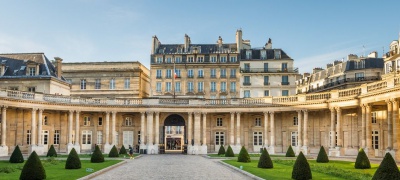Place des Vosges, an architectural jewel in the heart of Paris’s Marais district, stands as a remarkable testament to the city’s history and beauty. Built under the reign of Henri IV at the beginning of the 17th century, it is renowned as the oldest and most harmonious royal square in Paris.
The architecture of Place des Vosges is emblematic of the Renaissance and French Classicism. The buildings surrounding the square are constructed in red brick and white stone, featuring mansard roofs and elegant arcades on the ground floor. Each façade displays refined architectural details such as sculptures, wrought-iron balconies, and mullioned windows—reflecting the meticulous craftsmanship and royal grandeur of the era.
The residences around Place des Vosges are among the most coveted in Paris, offering luxury apartments and private mansions meticulously restored to preserve their historical character while integrating modern comforts. Spacious interiors often feature exposed wooden beams, antique fireplaces, and original parquet floors, creating an atmosphere of elegance and comfort steeped in history.
Living near Place des Vosges offers not only a prestigious setting but also privileged access to renowned cultural landmarks. Among them is the Maison de Victor Hugo, where the writer lived for many years—now transformed into a museum dedicated to his life and works, adding a literary and artistic dimension to the square’s already captivating aura.
In summary, Place des Vosges embodies the timeless elegance and cultural richness of Paris, attracting history enthusiasts, art collectors, and architecture lovers from around the world. It is a place where past and present blend harmoniously, making every residence a living testament to the artistic and historical grandeur of the French capital.





